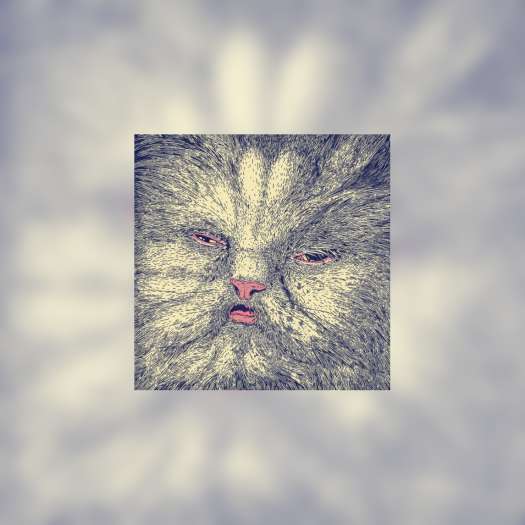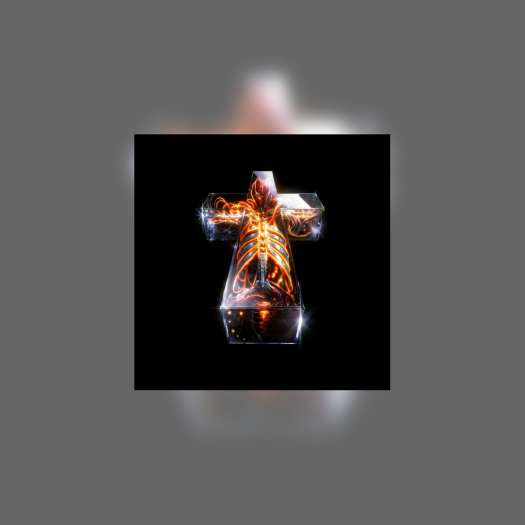It's a scene you've watched many times before: a gangster viciously taking revenge on a rival mob boss. But as this particular set-piece progresses, it proceeds from a "Goodfellas"-style hit, to a protracted, "Clockwork Orange"-inspired torture show. The gangster in question unpacks a satchel full of hammers, saws, knives, ice picks (I lost track after a while) and employs them all with furious, red-faced, vein popping relish (we see everything through a subjective fish-eyed lens, giving us the perspective of the victim). After this debacle is finished, the gangster slumps back in a hotel-room chair, his face and T-shirt soaked in blood, and he stares blankly at his work. The stare turns into a glower, one that we know well, and as a hokey love song plays away on a nearby turntable, the "Clockwork Orange" homage is complete.
"Gangster No. 1" was directed by Paul McGuigan, whose previous film, "The Acid House" was overly abrasive, but showed some promise. This one is abrasive too, but in a much more provocative way. It begins in the present, introducing us to a rich old bastard (Malcolm McDowell), whose smarmy demeanor turns to blanched panic, and then to excitement, when he hears that somebody named Freddie Mays has just gotten out of prison. About an hour of the film consists of a flashback to 1968 when young McDowell's character (Paul Bettany,
"A Knight's Tale") first meets the seemingly omnipotent mob boss, Freddie (David Thewlis). It's a long flashback, but it's a damn good one, full of ripping good tension (there are lot's of nail-biting, "look-me-in-the-eye" confrontation scenes), and it has a terrific art deco look. When the film uneasily settles back into the present tense, we see McDowell's character as less of a typical mobster and more of a deranged sociopath with a particularly unsettling identity crisis (even his name is never revealed to us). He really can't function without the enticing promise of another face-off with his old rival. Although McDowell's performance is pretty terrific (he chews the scenery like a rabid badger) much of the credit should go to Bettany as his younger incarnation. He creates a believable psychopath out of thin air, and although there are deliberate gaps in his character's psychology, we're too wrapped up in the process of his frightening transformation to ask why.
The screenplay was written by Johnny Ferguson who adapted it from a play by Louis Mellis and David Scinto (they wrote "Sexy Beast"), and I'm a firm believer that these guys are the ones who should be getting the attention and accolades that have been heaped on that soulless poser, Guy Ritchie. And for his part, Paul McGuigan's direction is quite good when he's not overworking his in-your-face flourishes. He splits the screen into five different sections at one point, and he even has the film-frame shatter like glass a couple of times. There are flashbacks and flash-forwards aplenty, but it all hangs together quite well because he has the presence of mind to take his meddling hands off the film stock every once in a while to let his actors shine. This isn't a movie for the faint of heart, and it may even turn off some genre fans (it breaks trust with the audience often). It's also notable for devoting at least one show-stopping scene each to just about every vile bodily fluid you can think of, from piss and spit to blood and snot. When one weak-stomached hit man throws up, McGuigan stages the scene so that he does it in front of a gleaming headlight. He doesn't just want us to see the vomit spewing he wants it to light up the screen.
"Gangster No. 1" was directed by Paul McGuigan, whose previous film, "The Acid House" was overly abrasive, but showed some promise. This one is abrasive too, but in a much more provocative way. It begins in the present, introducing us to a rich old bastard (Malcolm McDowell), whose smarmy demeanor turns to blanched panic, and then to excitement, when he hears that somebody named Freddie Mays has just gotten out of prison. About an hour of the film consists of a flashback to 1968 when young McDowell's character (Paul Bettany,
"A Knight's Tale") first meets the seemingly omnipotent mob boss, Freddie (David Thewlis). It's a long flashback, but it's a damn good one, full of ripping good tension (there are lot's of nail-biting, "look-me-in-the-eye" confrontation scenes), and it has a terrific art deco look. When the film uneasily settles back into the present tense, we see McDowell's character as less of a typical mobster and more of a deranged sociopath with a particularly unsettling identity crisis (even his name is never revealed to us). He really can't function without the enticing promise of another face-off with his old rival. Although McDowell's performance is pretty terrific (he chews the scenery like a rabid badger) much of the credit should go to Bettany as his younger incarnation. He creates a believable psychopath out of thin air, and although there are deliberate gaps in his character's psychology, we're too wrapped up in the process of his frightening transformation to ask why.
The screenplay was written by Johnny Ferguson who adapted it from a play by Louis Mellis and David Scinto (they wrote "Sexy Beast"), and I'm a firm believer that these guys are the ones who should be getting the attention and accolades that have been heaped on that soulless poser, Guy Ritchie. And for his part, Paul McGuigan's direction is quite good when he's not overworking his in-your-face flourishes. He splits the screen into five different sections at one point, and he even has the film-frame shatter like glass a couple of times. There are flashbacks and flash-forwards aplenty, but it all hangs together quite well because he has the presence of mind to take his meddling hands off the film stock every once in a while to let his actors shine. This isn't a movie for the faint of heart, and it may even turn off some genre fans (it breaks trust with the audience often). It's also notable for devoting at least one show-stopping scene each to just about every vile bodily fluid you can think of, from piss and spit to blood and snot. When one weak-stomached hit man throws up, McGuigan stages the scene so that he does it in front of a gleaming headlight. He doesn't just want us to see the vomit spewing he wants it to light up the screen.




